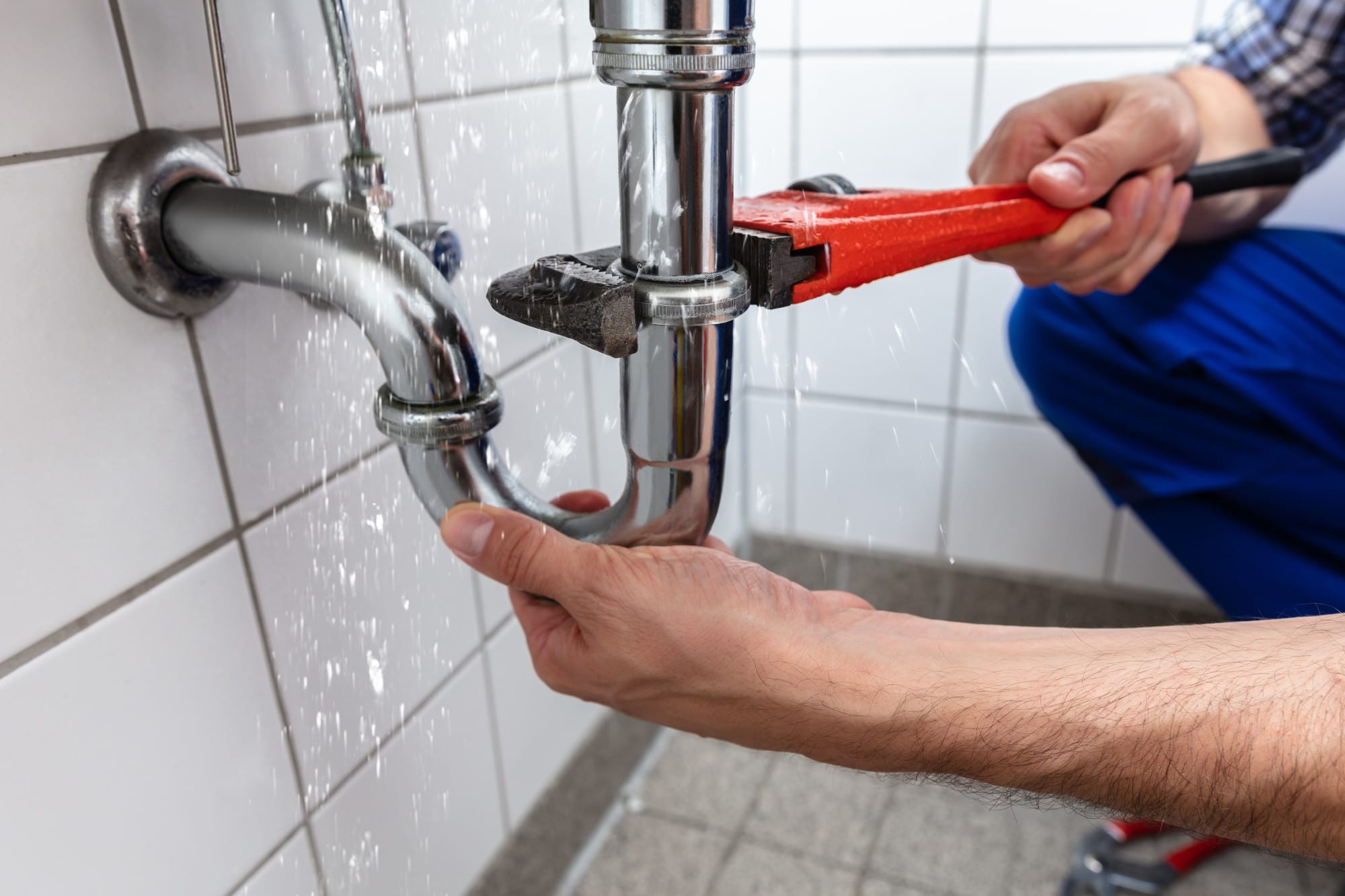We have stumbled upon this article about Do’s And Don’ts In Case Of Water Damage down the page on the net and reckoned it made perfect sense to write about it with you here.

What should you do if a water pipe bursts in your house? Do you want a mini-waterfall and also flooding in an area of your house? You have to act quick if you discover on your own in this circumstance. The longer you wait, the extra severe the damages that can occur to your residential property. The clearheadedness is key in these events. For these reasons, you require to find out just how to act in case of a burst pipes. Take a look at the following suggestions listed below to help you act quick since time is essential.
Shut down the Main Waterline Valve
The first thing to do? Close the shut-off shutoff. Seek the neighborhood shut-off shutoff to turn off the water in one certain location just. Go for the primary water line shutoff and also transform it off if you don't understand where the localized shut-off valve is. This action will certainly remove the water quickly in your entire residence. Usually, the primary valve is located outside the residence beside the water meter. If it's not there, you can additionally discover it in 2 locations: in the basement at eye degree or the 1st floor on the ground. Usually, contractors placed the shut-off shutoff generally ground level restroom or appropriate alongside it.
Call Water Damage Remediation Pros for Aid
After closing the water resource, call the experts for aid. With their professional aid, you can avoid a lot larger water damages consisting of distorted walls, loose ceramic tiles, or harmed structures.
Record the Damage For Insurance coverage
While you're waiting for the pros to arrive, get some paperwork of the damages triggered by the wayward pipe. Take photos and also videos of whatever. Do close-up shots of the harmed spots as well as prized possessions. Your documents will work as proof for your homeowner's insurance. Maintaining aggressive with this situation helps you to sue for insurance coverage, which will certainly further support you as well as your family members to get back on your feet.
Recover Points That Can Be Conserved
Once you're done taking pictures, analyze the damaged products and also obtain one of the most important ones from the stack. Dry them off in a dry/warm area far from the broken location and attempt to protect them as long as you can. Drag as much dampness as you can to the product so it can start to dry.
Begin the Drying Process
You need to begin the drying out process immediately. Luckily, the water from your waterlines is currently tidy so you don't have to fret about sewage system water. The moving water might have disrupted the dust and particles in your floorboards and carpets. In this instance, placed some gloves on and begin some troubleshooting. Usage buckets to dump out the water. Remove as much water as you can from the surface areas with old towels. Turn on an electric follower or open your windows to promote air blood circulation. These steps will certainly speed up to dry as well as discourage mold and also mildew development.
Professionals are the only individuals certified to assess appropriately as well as fix the burs pipelines and succeeding damage. As constantly, pipes don't simply suddenly break out of the blue. They normally give silent red flags like bubbling paint, water spots. Weird sounds in the plumbing, caving ceiling, musty smell, or peeling wallpaper. Make note of these indications and also do some safety nets so you can nip any kind of problems in the bud.
What should you do if a water pipeline ruptureds in your residence? For these reasons, you need to find out how to act in the event of a ruptured water pipe. After shutting the water resource, call the specialists for assistance. With their expert aid, you can avoid much bigger water damages including distorted baseboards, loose floor tiles, or damaged structures. Fortunately, the water from your waterlines is already tidy so you do not have to stress concerning sewage system water.
How to Handle a Burst Pipe and Minimize Damage
Steps to Take Ahead of Time
If you own property in an area that experiences cold weather, you need to be aware of seasonal maintenance tasks that will help you protect your property as the weather changes each year. One of the most important steps is to winterize your pipes to ensure they won't freeze or burst when the temperature drops. This includes action items like insulating any exposed pipes, detaching garden hoses and covering outdoor faucets. If the weather gets cold enough, you may even consider leaving a faucet dripping or opening cabinet doors during the coldest parts of the day.
No matter how prepared you might be, accidents and emergencies still happen. You'd be wise to set up a savings account specifically for your property so you have a "rainy day" fund set aside for unexpected expenses. All homes—regardless of age, location or condition—will inevitably need some form of emergency repair.
Steps to Take for Frozen Pipes
A frozen pipe will not necessarily burst, so if you can catch a frozen pipe early on, you could save yourself a major headache. When your area experiences frigid temperatures, be sure to check your plumbing and keep an eye out for warning signs like faucets only releasing small amounts of water or toilets not refilling when flushed. If you do run into one of these issues, you're likely dealing with a frozen pipe.
If this happens, your first step should be to cut off the water supply to that section of the plumbing. Expanding and freezing water can quickly cause damage. Even if the water supply is shut off, you will likely still deal with some leaking from the water that defrosts after the pipe has thawed. Be prepared with a mop, bucket and/or towels to quickly soak up any excess water.
In order to thaw a frozen pipe, you can use a space heater, infrared or incandescent heat lamp, or even a hairdryer to warm up the frozen area. Heat tape is also an option and should be used according to manufacturer instructions. Do not use any sort of open flame to thaw frozen pipes, as it poses a major fire hazard and can damage your pipes further.
Steps to Take for a Burst Pipe
Water damage claims are the second most common insurance claim in the U.S. When you're dealing with a frozen pipe, the water continues to expand as it freezes, which creates pressure that can cause a pipe to burst. When this happens, the crack or leak in the pipe allows water flow from the pipe to enter your home where it shouldn't. If a pipe does burst, you need to act quickly to mitigate property damage and repair cost.
Your very first step should be to shut off your main water supply to minimize flooding—typically the most expensive damage to address. Once you've shut off the water supply, make sure you identify the entire area that has been impacted by the leak. Remove as much water as possible—as quickly as possible—using a mop, sponges, towels or a shop vacuum or wet/dry vacuum. To prevent long-term damage due to moisture build-up, run a dehumidifier or fan in the affected area. Contact a licensed plumber to ensure the pipe is correctly repaired before running any water to that section of the home again. Burst pipes and the associated water damage are something you absolutely want to avoid as a property owner. If you've had to learn your lesson the hard way, don't let yourself get caught in a similar situation during the next spell of cold weather. The best way to deal with frozen or burst pipes is to prevent them in the first place—proactive winter maintenance will save you time, money and a whole lot of stress.

I discovered that article on Water Damage Restoration Do’s And Don’t while doing a search on the internet. Feel free to take the time to promote this post if you enjoyed it. Kudos for your time. Please come visit our site back soon.
 Molly Ringwald Then & Now!
Molly Ringwald Then & Now! Joshua Jackson Then & Now!
Joshua Jackson Then & Now! Matilda Ledger Then & Now!
Matilda Ledger Then & Now! Bill Murray Then & Now!
Bill Murray Then & Now! Naomi Grossman Then & Now!
Naomi Grossman Then & Now!